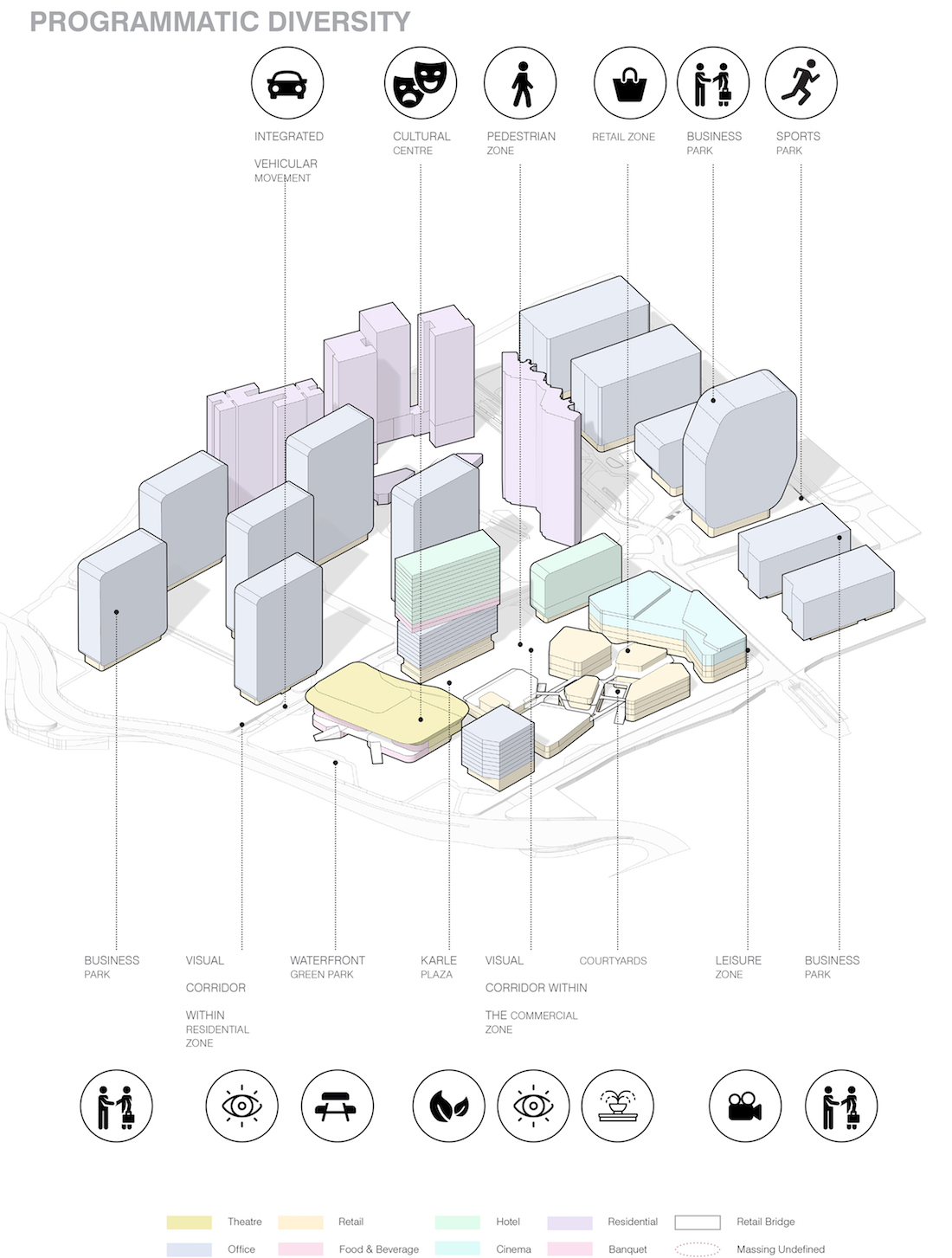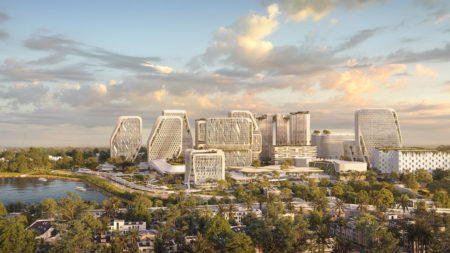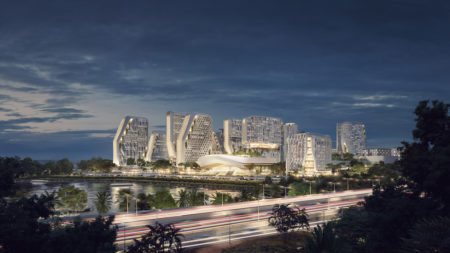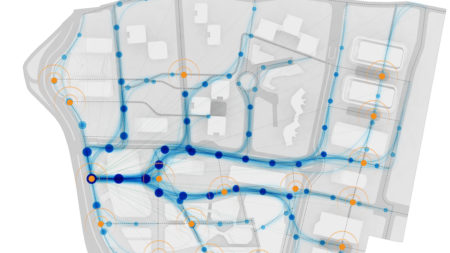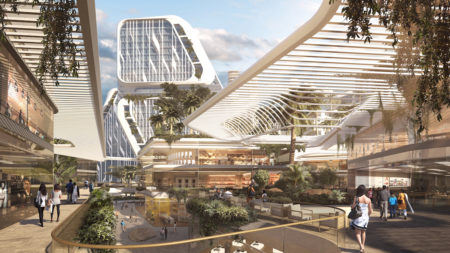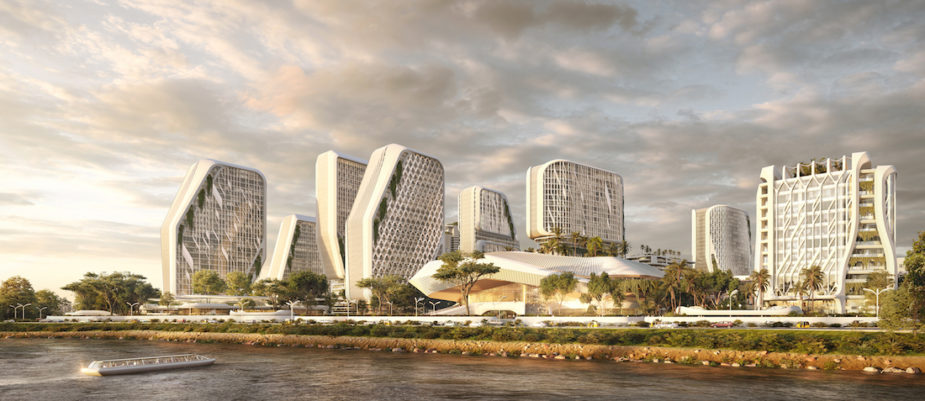
An urban community-oriented design to fight the urban stagnation: the Karl Town Centre in Banglore, at the core of the Indian Silicon Valley, is a district that uses the IoT to foster human and environmental sustainability. UnStudio has focused on three main factors: the beauty of Bangalore’s lush natural environment, health and culture promotion as the main drivers of social and economic growth.
“We have so much data at our fingertips that can be used to analyse behaviour and inform design on an urban scale. We should use this to devise urban solutions that allow us to live in healthy environments that enable social interaction and capitalise on our free time more valuable”.
With these words, the UnStudio architect Ben van Berkel has presented the project of the Karl Town Centre, the new district of the Indian city of Banglore.
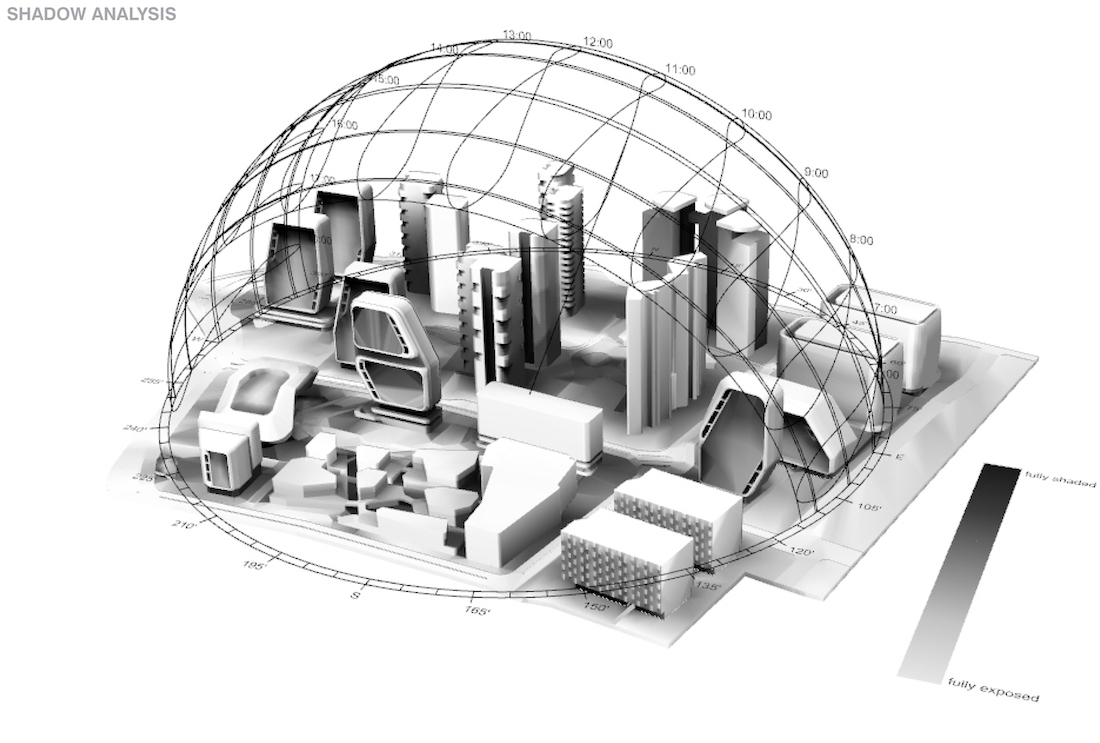
Design to address the problem of urban stagnation, the district was thought with an actual Urban Branding Manual” with the goal of attracting new talents, families and investors.
Therefore, UnStudio has design an urban space that combines the nature of the so-called Garden City as a place of reconciliation between man and nature, and IoT technology, as an unlimited source of data that allow to re-shape the environment based on the living experience of those who inhabits it.
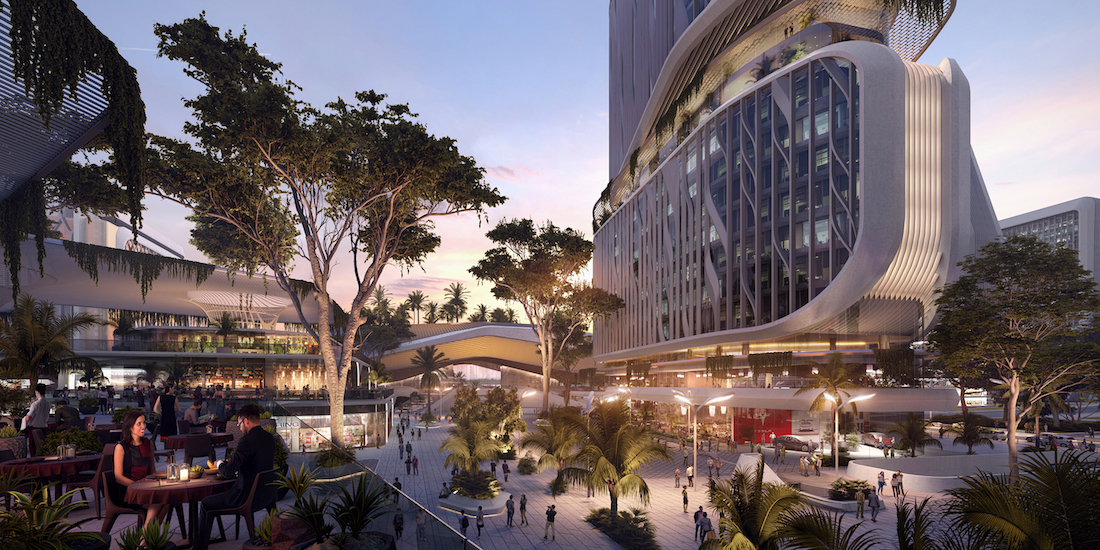
The (Inter)Cultural local perspective is so assumed as the framework for answering to the local needs of health, security and social networking, read dynamically and constantly though technological sensors.
Firstly, technology can be used as a powerful tool to promote social sustainability. An example of it is the attention paid to mobility: the vehicular traffic, one of the main problem of Indian cities, is separated from the green and shaded pedestrian paths that encourage pedestrian movement while offering respite from an otherwise bustling urban context.

Although technology, when combined with nature and architecture, can be also a mean of a better environmental sustainability: local greenery has been studied to control the heat gain through thermal buffering, reducing, as well, unwanted wind and filtering the fine particulates that have been lifted from the soil, while the large underground water retention zones are used for the treatment of greywater use and the irrigation of onsite vegetation and the storage.
Text by Gabriele Masi.
